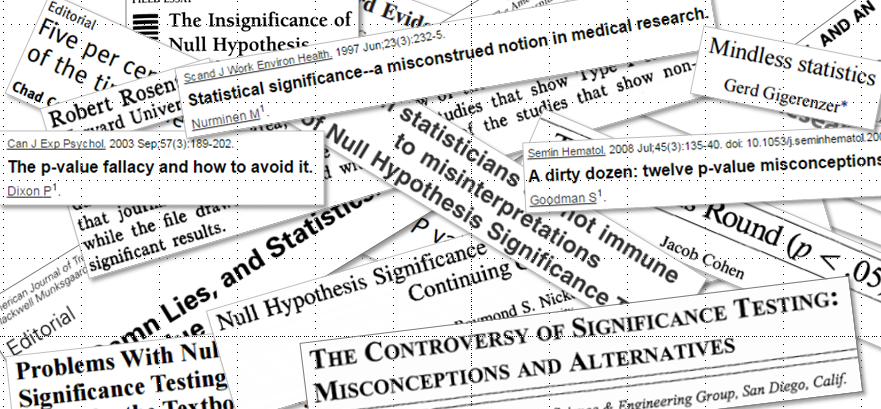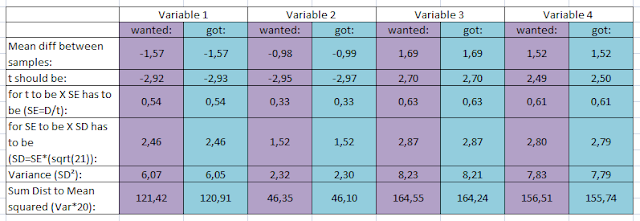There are a lot of advice books out there which tell you what to answer
to all those mean questions that you might be asked at a job interview.
They might be more or less useful. However, they never tell you what to *ask*
in order to find out if a PhD-position is or isn’t a good one. (At least I
haven’t found any book that tells that. And I read a lot of these books before
applying to my PhD-position because relying on my social skills would have been
foolish.)[1]
But don’t worry, I’ll tell you ;).
Of course this list is subjective, but maybe it can give some ideas about
what could possibly be relevant to someone who is looking for a PhD-position.
Because at the time I didn’t ask any of these things. I was just glad they took
me... :/
This first part is related to questions about the project you are
applying for... further parts will be related to the supervisor/professor and the
group you are (potentially) going to work with and the working environment.[2]
Most often when you apply for a PhD-position in a specific project a
short description of the project is given in the job-advertisement. But this description is generally very short and doesn't tell much at all what it's really about.
Therefore I think the supervisor or whoever does the interview should
introduce you more to the topic, the background theories and how the specific
question is planned to be answered.
With how I don't mean answers like "with fMRI" or "with
TMS" (what most likely the job-description already tells), but a more
specific explanation of the planned study design, so that you can (try to) judge
if that is realistic to accomplish or not. For that purpose it would be useful
to get a copy of the project-proposal. It would spare the supervisor time and
you could assess by yourself if you think it's realistic. Yes, in theory any
funded research project has already been through a selection process during
which, among other things, the feasibility of the research idea should have
been evaluated. However, that is the theory. It seems to me, that in practice no
one in these selection committees does some basic reality checks. Therefore
you’ve to do it by yourself. [3]However,
a lot of researchers might not like to give their proposal out because they
might fear that you steal their brilliant ideas. That is fine[4],
but in this case I still think they should give enough background information
to make judgements possible.
Of course it is possible that the study design is not yet developed (though
I think at least a rough study design should be part of the proposal). I think that that should be mentioned as it involves more uncertainty then.[5]
So whether or not you get the research proposal, what are the critical
points to check?
First, I think it is important information which population should be
examined. Patients with rare disorders might be difficult or impossible to
recruit for participation in a demanding experiment.[6]
That does not mean that such research should not be carried out. I doubt that
difficulty in recruitment is related to the importance of the research, but it
should be taken into account: You might end up with a very long recruitment
phase and/or a very small sample size. So be prepared to conduct an
underpowered study...
The other important factor is how many participants should take part in
the study in total in comparison to the measurement time per participant and
the available lab/MRI time. In general, the longer the experiment the lower the
change to get enough time to do the measurements. Also take into account that
one day has 24h available hours at maximum.
As next, I would consider number of methods to be learned. It takes time
to learn to analyze an fMRI design, but there might be much more you have to
learn. You might have to do additional MRI-recordings and analysis.[7]
Furthermore you may have to or want to run additional recordings in parallel to
the MRI (like skin conductance, heart rate, breathing, or even EEG) or an
additional part of the study might be done with EEG, TMS, eye-tracking, virtual
reality or something like that. It might be exciting to learn a lot of methods;
but it takes time. Therefore I think it is an important point to take into
consideration. A finished PhD with just one or two methods is probably much
more worth than an unfinished PhD with 10 half-learned methods. Of course a
number of factors might influence how hard it is to learn various methods. I’ll
speak about that in a later post.
It might also be important to ask if the project is already running and
if so at which stage it is. I'm not saying it's good or bad if the project is
already running, but it might be important information. You likely won't be
involved in the experimental design then, but on the other hand data (to
publish!) might be available faster (and: it's running!). The important question then is, though, to
whom the data "belong", i.e. who is allowed to publish with them? This is a question
that can lead to huge fights in some groups.
Speaking about already running experiments, I’d furthermore say that it
is "dangerous" to start with any new method that has not been applied by anyone
in the department/institute before. Even if it should work in theory (it surely
should, otherwise no one would use it, right?) it might be that the hard- or
software used at the institute is not compatible to what you (or the research
proposal) plan. If you can check the compatibility, do so.
Also, whether you got the proposal to read or not, try to read background
studies on the subject. If you got the proposal, you can find them by yourself,
if you didn’t get it I think you should ask for them. The professor might tell
you, that it is sufficient if you read them once you got the position (which
may sound nice), but I think that is kind of too late.
Though it's still possible to terminate a PhD later (i.e. once you have
enough insight into the project) it's harder because of the time you've invested.[8]
So try to find out if the background studies are sound[9],
especially if it are background studies from the same department.[10]
And if you have to do a direct or indirect replication of work done previously
by your supervisor, run away.[11]
P.S.: Sorry for my english. I deleted about half of my text (bc too long), so I hope it makes still some sense...
And for the next post I'll complain about which handy feature the English language is missing.
P.S. 2: I really hope this is not misunderstood as advice on how to get an "easy" PhD. It's not meant to be!
[1] [Though, reading those books was already a good start into wasting
a lot of time since I was not asked any of those weird questions during the job
interviews (for what I should be glad). It seems social skills are not a selection criteria*. Obviously
those questions might also be pretty unvalid and unreliable, especially if more
people are like me and just learn the “correct” answer from a book, but considering
all the unreliability of research I doubt that that is why they are not used to
determine who’s a good candidate. *They might be success criteria though. More
on that later.]
[2] [This distinction is a bit artificial, but I didn't want to write
an even longer post than I already wrote. Especially since not everything
applies to everybody.]
[3] [Although it would of course be better if a selection committee of
experts did that and not a student who hasn’t even started a PhD-training yet.]
[4] [I guess in some areas it's more realistic than in others.]
[5] [If in need for a list what can go wrong, contact me ;) ]
[6] [For animal-studies it might
be that some animals are difficult to get. For example mice with a specific
gene modification. But I don’t work in animal-research, so I don’t know much
about that.]
[7] [Like, for example, morphometry, DTI (diffusion tensor imaging), functional
connectivity (e.g. PPI), resting state analyses (e.g. ICA), MR spectroscopy,
ASL (arterial spin labeling), or another fancy (new) method.]
[8] [Time-investment sound way too nice... I don't want to
scare anyone away from a PhD. Just choose the project carefully. Otherwise it might be more than just time.]
[9] [or not less so than an “average” study]
[10] [Which would not be surprising because it makes sense to build new
work on previous work, but it can lead to a lot of trouble when they are... not good.]














